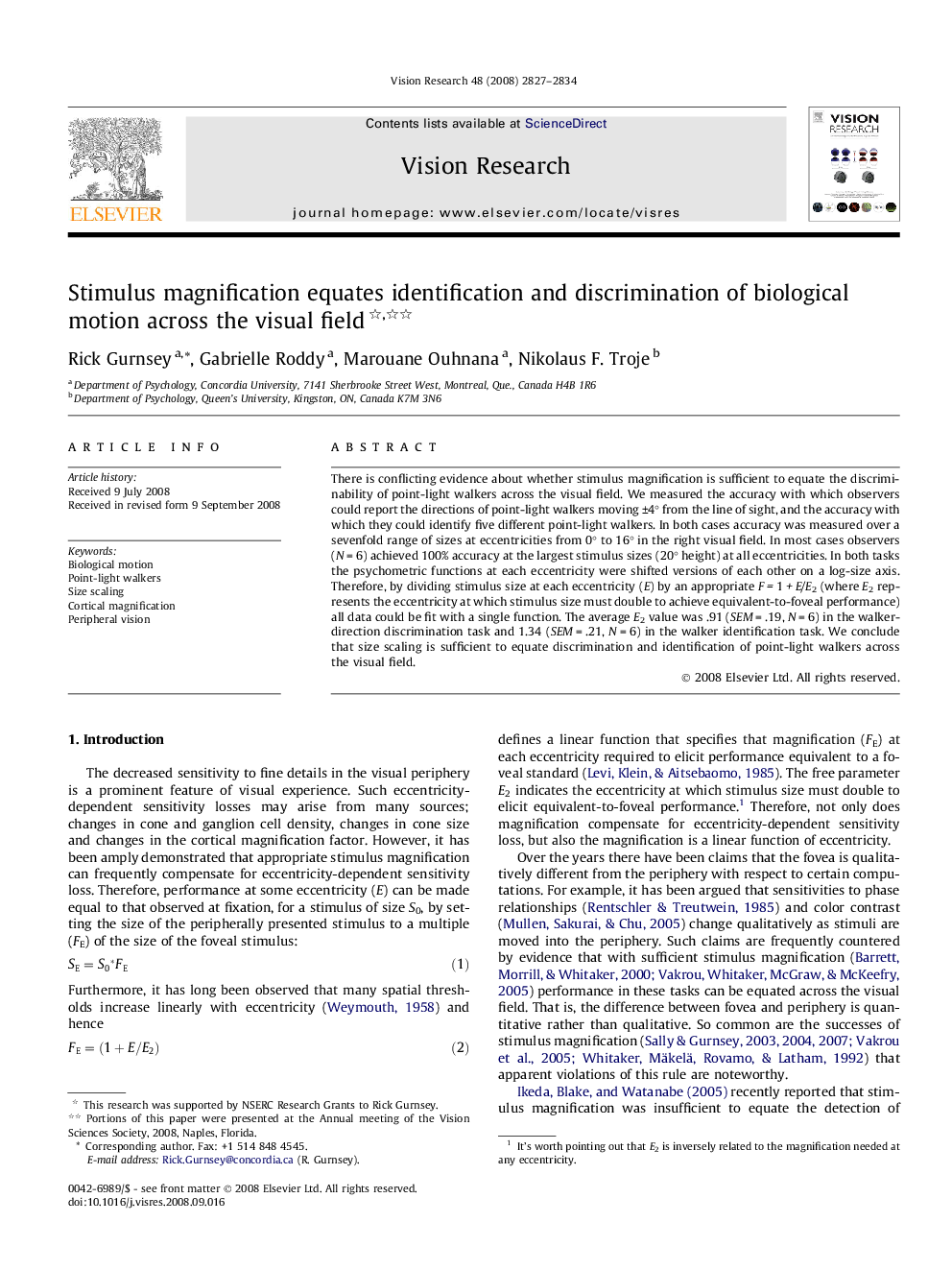| Article ID | Journal | Published Year | Pages | File Type |
|---|---|---|---|---|
| 4034847 | Vision Research | 2008 | 8 Pages |
There is conflicting evidence about whether stimulus magnification is sufficient to equate the discriminability of point-light walkers across the visual field. We measured the accuracy with which observers could report the directions of point-light walkers moving ±4° from the line of sight, and the accuracy with which they could identify five different point-light walkers. In both cases accuracy was measured over a sevenfold range of sizes at eccentricities from 0° to 16° in the right visual field. In most cases observers (N = 6) achieved 100% accuracy at the largest stimulus sizes (20° height) at all eccentricities. In both tasks the psychometric functions at each eccentricity were shifted versions of each other on a log-size axis. Therefore, by dividing stimulus size at each eccentricity (E) by an appropriate F = 1 + E/E2 (where E2 represents the eccentricity at which stimulus size must double to achieve equivalent-to-foveal performance) all data could be fit with a single function. The average E2 value was .91 (SEM = .19, N = 6) in the walker-direction discrimination task and 1.34 (SEM = .21, N = 6) in the walker identification task. We conclude that size scaling is sufficient to equate discrimination and identification of point-light walkers across the visual field.
